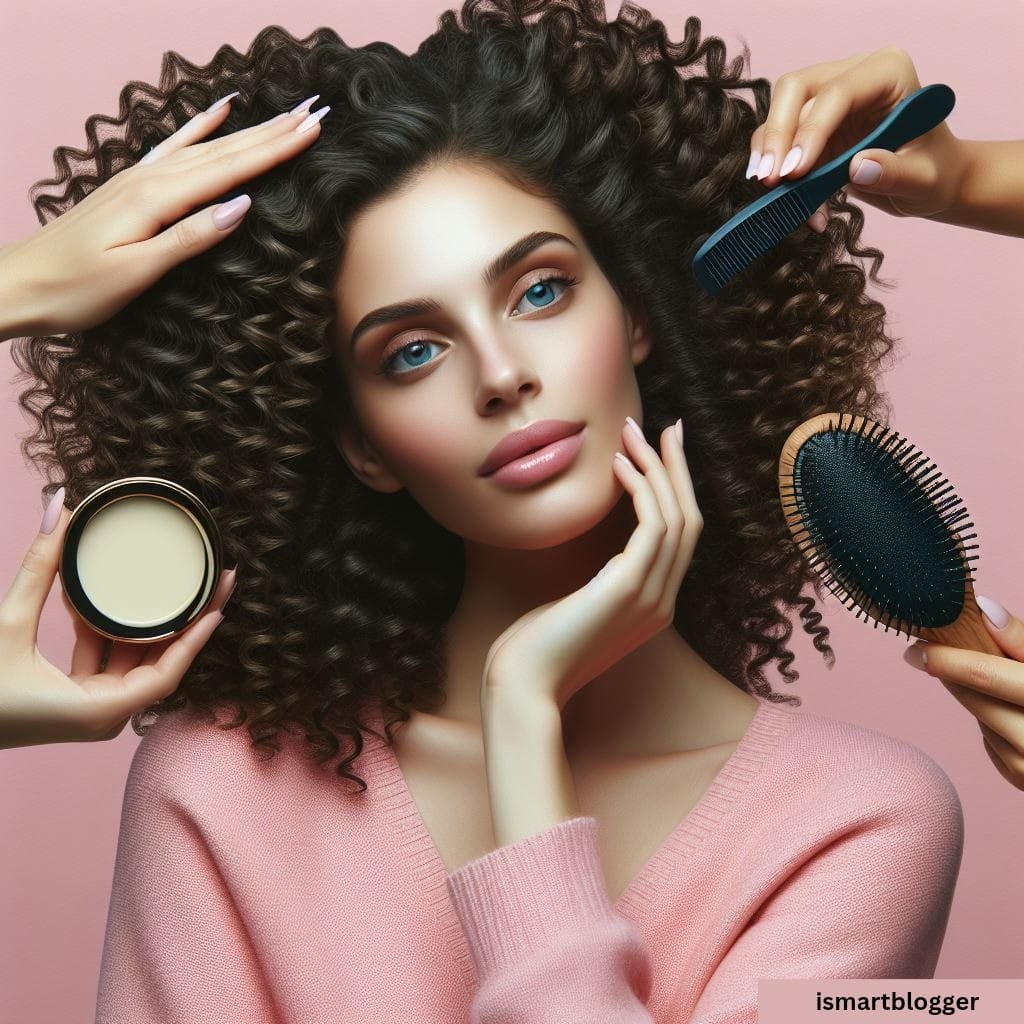Introduction
Natural hair is a beautiful and diverse expression of our individuality. It refers to hair that has not been chemically processed, relaxed, or altered in any way.
Instead, it retains its unique texture and pattern, which can range from loose waves to tightly coiled curls. Understanding natural hair and its characteristics is crucial for anyone who wants to embark on a journey of self-discovery and embrace their natural beauty.
Brief explanation of natural hair and its characteristics
Unlike chemically treated hair, natural hair has a distinct structure that requires specific care techniques. One defining characteristic of natural hair is its tendency towards dryness due to the coils and kinks along the strand. These tight patterns make it difficult for the scalp’s natural oils to travel down the entire length of the hair shaft, resulting in moisture imbalance.
Additionally, each individual’s natural hair type falls within a spectrum known as the Andre Walker Hair Typing System. This system classifies hair into four main categories (straight, wavy, curly, coily) further delineated by subcategories (A-C), based on curl pattern and texture.
For instance, type 3 hair ranges from loose curls (3A) to tight corkscrews (3C), while type 4 encompasses tightly coiled strands (4A-4C). Understanding your specific curl pattern enables you to tailor your regimen accordingly.
Importance of understanding and caring for natural hair
Understanding your natural hair is essential because it allows you to provide personalized care that enhances its health and appearance. Natural hair requires a delicate balance between moisture retention and protection against breakage. Without proper understanding or care routines specifically designed for textured tresses, individuals may experience excessive dryness leading to brittleness, increased breakage, or even stunted growth.
Moreover, caring for our natural locks fosters self-love and acceptance. Embracing our natural hair empowers us to redefine beauty standards, challenge societal norms, and celebrate the diversity of our unique features.
By investing time into understanding and caring for our natural hair, we contribute to a positive self-image, increased confidence, and a stronger sense of identity. In the following sections of this article, we will delve deeper into understanding natural hair by exploring different textures and porosity levels.
We will also discuss effective hair care routines that prioritize moisture retention, protective styling options for length retention, and nurturing healthy natural hair growth through proper detangling techniques, balanced protein-moisture levels, and overall nutrition. So let’s embark on this journey together to unlock the full potential of your beautiful natural crown!

Different hair types and their unique features
Understanding the various hair types is crucial when it comes to caring for natural hair. One commonly used system to classify natural hair types is the Andre Walker Hair Typing System, which ranges from type 1 (straight) to type 4 (coily/kinky).
Within the type 4 category, there are subcategories such as 4A, 4B, and 4C. Each hair type has its own distinct characteristics.
For instance, type 3A hair tends to have loose curls that resemble an “S” shape. It often has a significant shine and is relatively easy to manage.
On the other hand, type 4C hair features tight coils with little or no curl definition. It tends to shrink significantly when dry and may appear coarse or dense.
Understanding your specific hair type helps in selecting appropriate products and styling methods that cater to its unique needs. By matching products tailored for your specific hair texture, you can enhance manageability and achieve desirable results.
Porosity levels and their impact on moisture retention
In addition to understanding different hair types, it’s essential to consider porosity levels when caring for natural hair. Porosity refers to your strands’ ability to absorb and retain moisture.
Identifying your porosity level helps determine which techniques are most effective in maintaining adequate hydration. Low porosity hair has difficulty absorbing moisture due to a tightly sealed cuticle layer.
This can result in product buildup if not properly addressed through appropriate cleansing techniques like clarifying shampoos or apple cider vinegar rinses. On the other hand, high porosity hair has a more open cuticle layer that allows moisture uptake but struggles with retention.
This can be addressed by sealing the strands with heavier oils or butter-based products after moisturizing with water-based formulas. By understanding your porosity level, you can customize your routine to ensure optimal moisture retention and prevent common issues like dryness, breakage, or frizz.
Scalp health and its connection to natural hair growth
Achieving healthy natural hair growth goes beyond focusing solely on the strands themselves. The scalp plays a crucial role in maintaining overall hair health and supporting robust growth.
A clean and well-nourished scalp is essential for optimal hair growth. Regular cleansing using sulfate-free shampoos or co-washing techniques removes excess sebum, product buildup, and debris that can clog hair follicles.
This promotes a healthy environment for new hair growth to flourish. Proper blood circulation is also vital for nourishing the follicles with oxygen and nutrients.
Massaging the scalp regularly with gentle circular motions improves blood flow, stimulates hair growth, and aids in relaxation. Furthermore, maintaining a balanced diet rich in vitamins, minerals, and proteins supports healthy scalp function and promotes strong natural hair growth.
Adequate hydration and reducing stress levels also contribute to an optimal environment for your scalp. By paying attention to your scalp’s health as part of your natural hair care routine, you can enhance the overall well-being of your tresses and promote vibrant growth.
Cleansing Techniques for Natural Hair
When it comes to cleansing natural hair, it’s essential to strike a balance between removing dirt and product build-up while preserving the hair’s natural oils and moisture. Co-washing, or conditioner washing, is a popular technique among those with natural hair. It involves using a gentle, sulfate-free conditioner instead of traditional shampoos.
This method effectively cleanses the scalp and hair without stripping away the natural oils that provide moisture and protection. Alternatively, clarifying shampoos can be used occasionally to thoroughly cleanse the scalp and remove any stubborn residue.
However, these should not be used too frequently as they can strip away essential oils and leave the hair feeling dry. To properly cleanse the scalp without stripping natural oils, it’s crucial to focus on massaging the scalp gently with your fingertips rather than vigorously scrubbing with your nails.
This helps stimulate blood circulation while promoting sebum production for healthier hair growth. Additionally, rinsing thoroughly with lukewarm water ensures all product residue is washed away without causing excessive dryness.
Moisturizing and Sealing Methods for Optimal Hydration
Maintaining proper hydration is key to keeping natural hair healthy and manageable. Water-based moisturizers are highly recommended as they penetrate the strands more effectively than oil-based products.
Look for moisturizers that contain humectants like glycerin or aloe vera, which attract moisture from the air into your hair. After applying a moisturizer, sealing in that moisture is crucial for long-lasting hydration.
Sealing oils such as jojoba oil or argan oil create a protective barrier around each strand by locking in moisture from the moisturizer. Apply these oils sparingly from mid-shaft to ends after moisturizing to prevent weighing down fine strands or causing greasiness.
Protective Styling Options for Length Retention and Minimizing Breakage
Protective styling is a vital component of natural hair care, as it helps retain length and minimize breakage. Low manipulation hairstyles are ideal for reducing stress on the hair shafts. Examples of these hairstyles include buns, braids, twists, and updos.
When styling, it’s crucial to avoid excessive tension or tightness that can lead to traction alopecia or breakage. To prevent this, opt for looser styles and use gentle techniques when manipulating the hair.
Additionally, using accessories like satin scrunchies or silk headscarves can help reduce friction and further protect the hair from damage. Remember to give your hair regular breaks from protective styles to allow it to breathe and recover.
Also, never neglect scalp care while wearing protective styles. Moisturize the scalp regularly with a light oil or leave-in conditioner to maintain a healthy environment for optimal growth.
Nurturing Healthy Natural Hair Growth
Proper Detangling Techniques to Minimize Breakage
Detangling natural hair can be a delicate process that requires careful attention to minimize breakage and damage. One effective technique is finger detangling, which offers numerous benefits over using combs or brushes.
By using your fingers to gently work through knots and tangles, you have greater control and can feel the tension in the hair strands, allowing you to adjust pressure accordingly. Additionally, finger detangling reduces the risk of snagging or pulling on fragile curls, protecting their integrity.
Tips on Detangling with Minimal Damage
To successfully detangle natural hair without causing damage, it’s essential to follow a few key tips. Firstly, prior to detangling, apply a generous amount of conditioner or a slippery leave-in product to provide slip and ease the process.
This helps reduce friction between strands and minimizes breakage. Secondly, start from the ends of your hair and work your way up towards the roots in small sections.
This method prevents further tangling and decreases strain on individual strands. Be patient and take your time; rushing through detangling may result in more breakage and frustration.
Maintaining Balanced Protein-Moisture Levels for Healthy Strands
Understanding the role of protein in strengthening hair shafts is crucial for maintaining healthy natural hair growth. Protein treatments are essential for replenishing lost proteins in our hair strands due to daily wear and tear. However, it’s equally important to strike a balance between protein treatments and moisture retention as an excessive amount of protein can make the hair brittle and prone to breakage.
To keep a healthy balance between protein-moisture levels, opt for deep conditioning treatments that contain both moisturizing ingredients like shea butter or glycerin alongside hydrolyzed proteins such as keratin or silk amino acids. This ensures that your hair receives both the necessary moisture and strength for optimal growth and overall hair health.
Recommended Protein Treatments and Frequency
When it comes to protein treatments, selecting the right product is essential. Look for treatments specifically formulated for natural hair that contain high-quality proteins like hydrolyzed keratin, wheat protein, or silk amino acids. These ingredients are easily absorbed by the hair shafts, providing strength and resilience.
The frequency of protein treatments depends on individual needs; typically, it’s recommended to incorporate them into your hair care routine every 4-6 weeks. However, pay attention to how your hair responds as some individuals may require more frequent treatments if their strands are excessively damaged or prone to breakage.
Nutrition and Lifestyle Factors that Promote Healthy Hair Growth
Achieving healthy natural hair growth extends beyond external care; nutrition and lifestyle play a significant role as well. Consuming a well-balanced diet rich in vitamins, minerals, and omega-3 fatty acids supports overall hair health.
Foods such as salmon, avocados, leafy greens, nuts, and seeds provide essential nutrients that nourish the scalp and promote strong strands from within. Additionally, adopting stress management techniques like meditation or exercise can help improve blood circulation to the scalp while reducing hormonal imbalances that may contribute to hair loss.
Conclusion
In caring for natural hair and nurturing healthy growth, proper detangling techniques utilizing finger detangling prove beneficial in minimizing breakage while maintaining curl integrity. Balancing protein-moisture levels through appropriate treatments strengthens the structure of our strands without compromising hydration levels.
Remembering that nutrition plays a vital role in maintaining healthy natural hair growth reminds us that beauty radiates from within us—nourishing our bodies with wholesome foods supports vibrant curls on our heads. By incorporating these tips into our hair care routines, we can cultivate flourishing natural hair that embraces its unique beauty and confidently shines.





